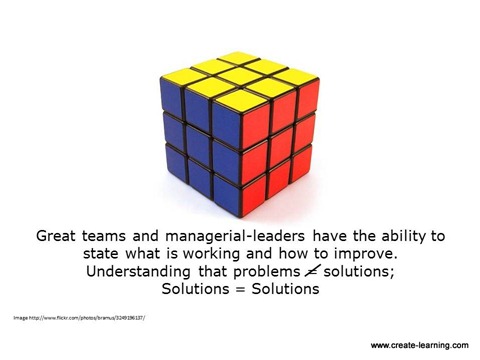Many change models for organizations, teams and managerial-leaders have a problem-leading-to-solution sequence. This feels like the best way to do things, because our beliefs are that we must fully know the problem, explore the problem, and make sure that the single problem is identified.
This can lead to false assumptions and “stuckness” because in complex systems a single point problem may be impossible to identify and changing only what we believe is the problem may not cause the change desired.
Using a Solution-Focused model asks;
What will be different when the problem is resolved?
Acknowledging the problem AND developing a shared understanding of the goal to be achieved. Then working backward to accomplish this goal by carefully and pragmatically searching through the organization, team and / or persons real-life and work experience to identify exceptions of when the solution is already happening or could possibly happen in the future.
This change leaves very little time searching for the origins and blame for the problem, the dysfunctional team and management problems, the blame game, backstabbing and just reinforcing challenges that the team has. These factors (at certain times) may be interesting BUT may influence the behavior and perception of the solution-goal the change is working to achieve.
Working from the present into the future. Allowing for each person and team to find what works, find a shared solution, shared cooperation, and take steps to find solutions that lead to solutions.
What do you think?
In what way can problems-leading-to-solutions be useful? If you look at many continuous improvement, change, and management models they do have a “what do you want to have happen?” or “ideal solution” or “goal statement” process…how much time should be spent on that part vs. the problem identification part?


